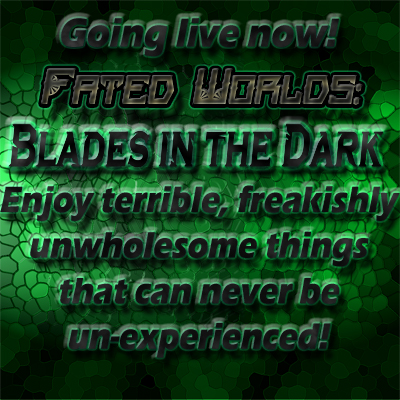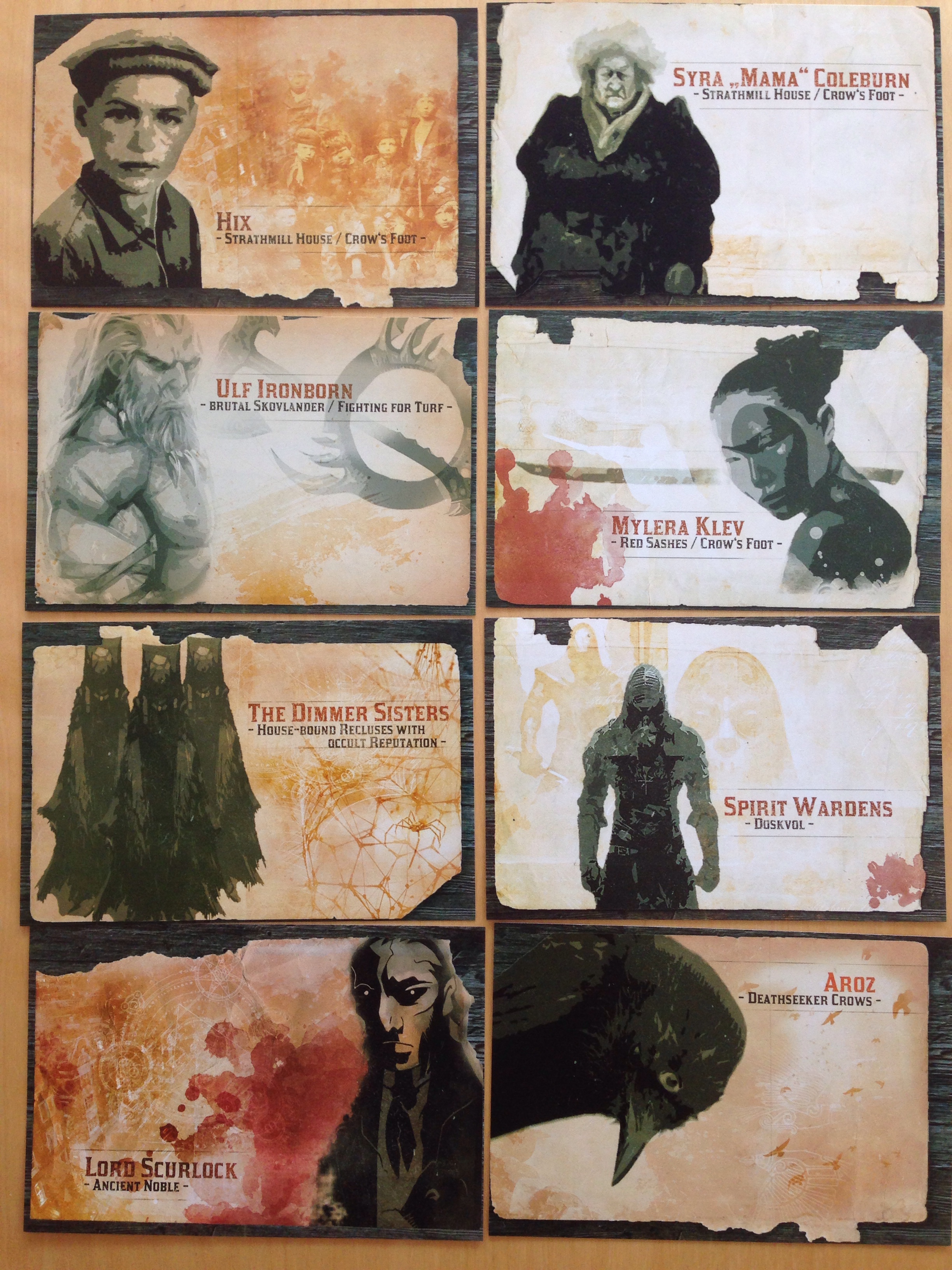The Porcelain Dolls: Session 31 (August 23 2016)
The Porcelain Dolls: Session 31 (August 23 2016)
Gloves is still in Ironhook. Everyone else is home.
We open with Constance dangling Fitz by his legs over the edge of the roof of the doll factory, while Shade and Boots stand by. Once Fitz regains consciousness and calms down enough to stop screaming and Constance is certain that she has his full attention, she hauls him back up and sits him down at the assembly table. She lays out her plan to re-open the lower part of the factory, and to put him in charge of the operation as legitimate owner of the building and associated business. She also wants him to hire McDonough as manager. Fitz nervously agrees, and Gears gives him the tour.
Constance confers with Boots to hear his thoughts regarding Mylera’s intentions. They don’t trust her and are certain the invitation is a trap. They also resolve to visit Gloves when they get the chance.
Constance instructs Boots, Kamali, and Gears to guard the factory, and finds Shade in the process of moving into the new workshop. He tells her about Jezelle, and shows her the spirit bottle. She brings him with her to meet with Mylera.
Along the way they notice that the Red Sashes are not visible in their usual haunts, and in fact the Moon’s Daughter is closed. Needless to say, Constance and Shade are on their guard. The Temple also stands unguarded. When they enter through the wide-open front doors, they find the house completely empty, except for Mylera herself in the main room, sitting and lighting incense with a long fireplace match. She congratulates them for taking care of Baszo for her, and explains she had recently received word that her exile had been lifted, and so the Red Sashes are going home. When pressed on the details of the root of the conflict, Mylera relents and finally tells them the entire story by the light of the slowly burning mach.
Mylera’s Tale:
Baszo had a personal vendetta against Mylera Klev because he believed her to be responsible for the death of his wife Celia a number of years ago. Celia and Mylera were sisters.
Celia was an agent of the Iruvian Ministry of Intelligence, and 15 years ago it was her mission to investigate possible links to Severosi agitators working against Iruvia. One of those possible links was Baszo. The Red Sashes were stationed in Duskwall as backup. Before long, Celia had fallen in love with Baszo. At first Mylera was convinced that it was part of the cover story, but when Aleira was born, there was no doubt. Mylera didn’t approve of the match, but couldn’t stand in the way of her sister’s happiness.
10 years ago, a Severosi agent named Antonio Tancredi assassinated Ambassador Khurram, throwing relations between Iruvia and Severos into turmoil. Fortunately, Khurram’s successor, Ambassador Bashir, was able to negotiate peace between Iruvia and Severos. It certainly helped that the events of the Skovlan Uprising were fresh in everyone’s mind, and no one wanted to attract the attention of the Imperial Army. Celia had identified Tancredi as one of Baszo’s contacts, but failed to report him to her superiors. However, another agent named Sayid did report him, as well as Celia’s activities. Celia, Mylera, and the Red Sashes were all sentenced to exile. If they set foot in Iruvia again, they would be immediately executed.
Celia blamed herself for the incident and the Sashes’ subsequent predicament. She begged Mylera to kill her, because there was a chance that Sultan Hassan would pardon Mylera and the Sashes for bringing Celia to justice. Mylera reluctantly complied, and Celia made her promise to never reveal the truth to Baszo. Unfortunately, it was not enough to convince the Sultan to forgive Mylera, and the Sashes remained in exile. Mylera has friends in the Iruvian Consulate who have been lobbying on her behalf, and they have only recently been successful. The Sashes have since divested themselves of all local business concerns, packed everything up and loaded it up on a ship bound for Eldira. Mylera was tying up loose ends when Constance arrived.
Mylera asks after Aleira, and Constance informs her she was being looked after. The question of handing her over to Mylera is raised, a prospect in which Mylera expresses singular interest. Constance voices her concerns for a woman’s prospects in Iruvia (based on what she knows of Kamali’s history), and Mylera assures her that the girl will want for nothing, will have the finest education, and every opportunity will be made available to her. Constance reluctantly agrees. Mylera hands her a set of keys, informing her that something exceedingly valuable was left behind in the Temple. Mylera says she needs to take some time to get her house in order, after which time she will return to visit, and at that time take the girl home with her. She tosses something to Shade on her way out – a primitive grenade, unlit (the implication being that if either of them had been any less conciliatory, she would have used it).
Constance and Shade return home to tell everyone else the news. The Lampblacks are no more, and the Red Sashes have removed themselves from the equation. She hands the keys Mylera gave her to Kamali and Gears, who promptly return to the Temple to investigate. They find that the three keys on the ring go to the outer doors, Mylera’s private study upstairs, and the vault in the basement. When they open the vault, they find it to be empty except for Mylera’s ledger, which contains all the details of the Red Sashes business dealings in Crow’s Foot. There is a handwritten note in the back, stating that they have a head start, but should hurry, as nature abhors a vacuum.
Notes:
Lot of exposition this time around, stuff I’d had planned out since Session 1. I wanted to give a little more weight to the central conflict than a simple territorial dispute, and I wanted it to be a situation where no one was clearly without blame. Everyone involved did their part to make everything that much worse, even though they all did what they misguidedly believed was right. Sometimes there are no winners.
#dontmesswiththedolls


